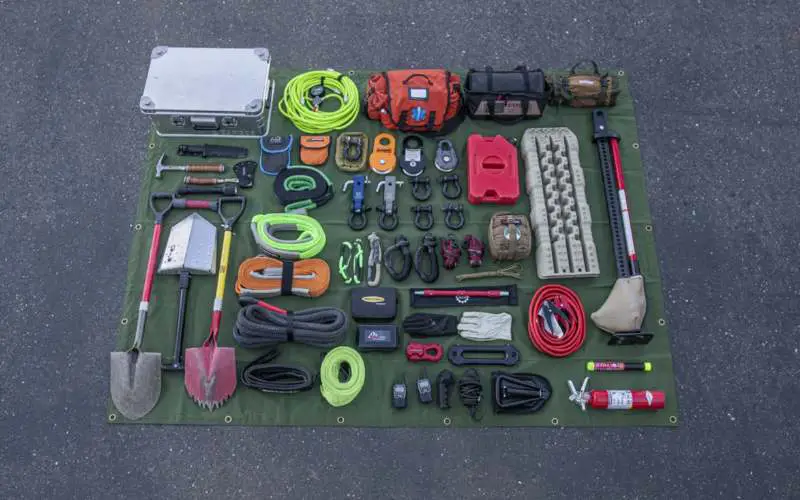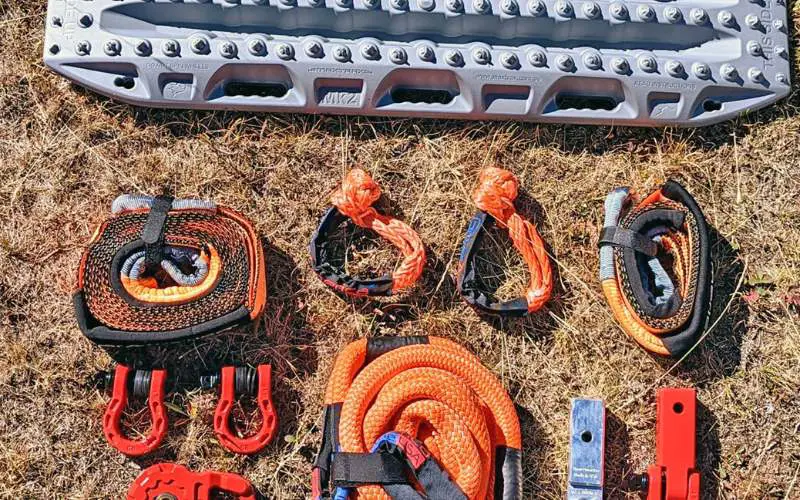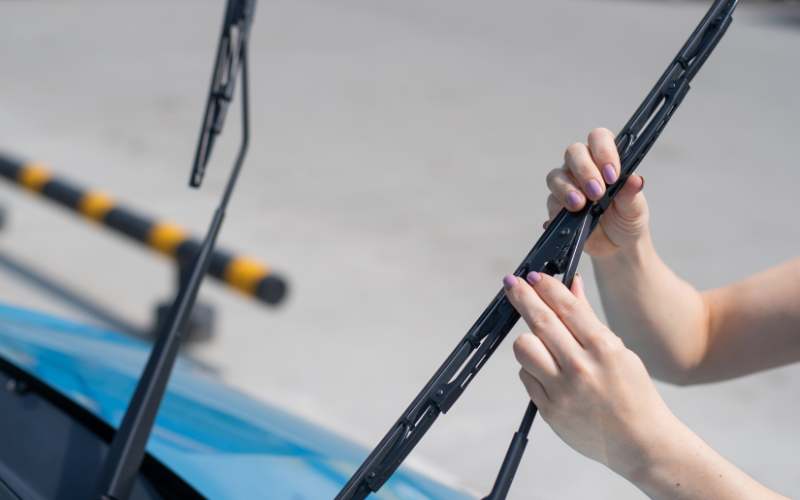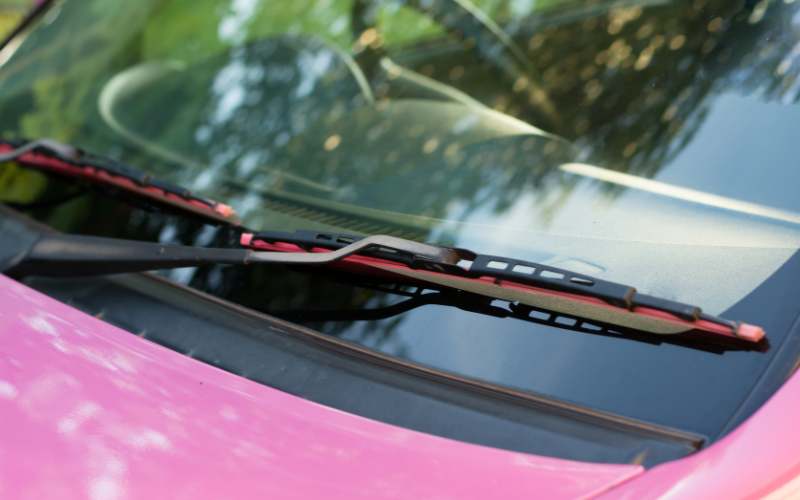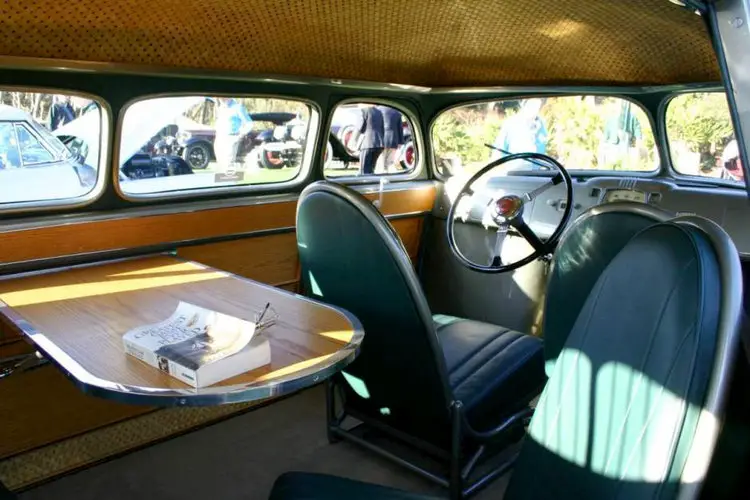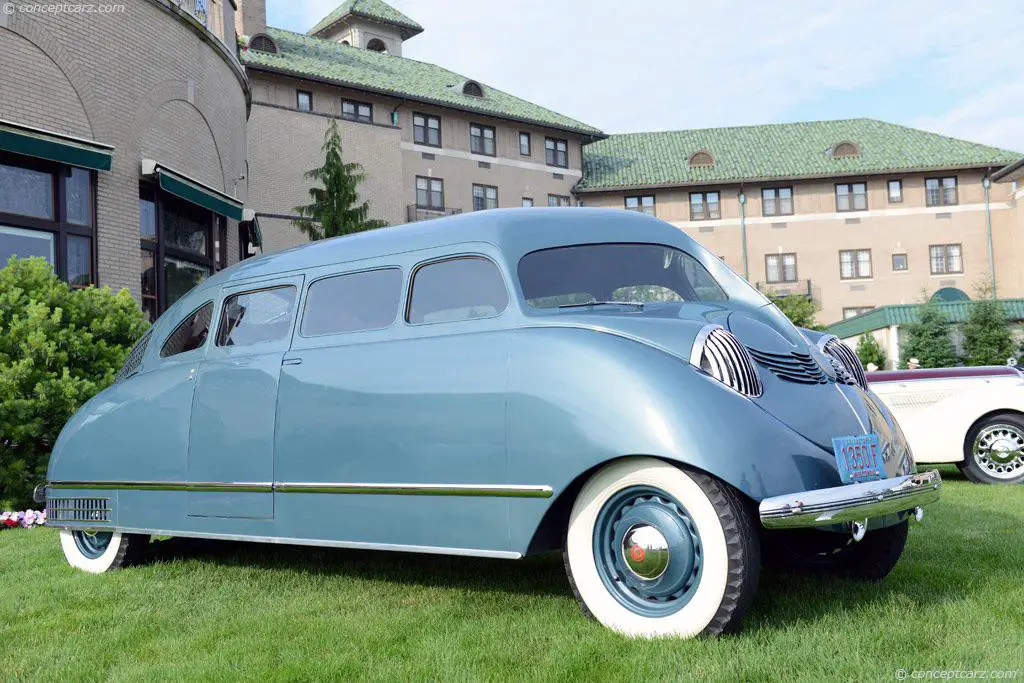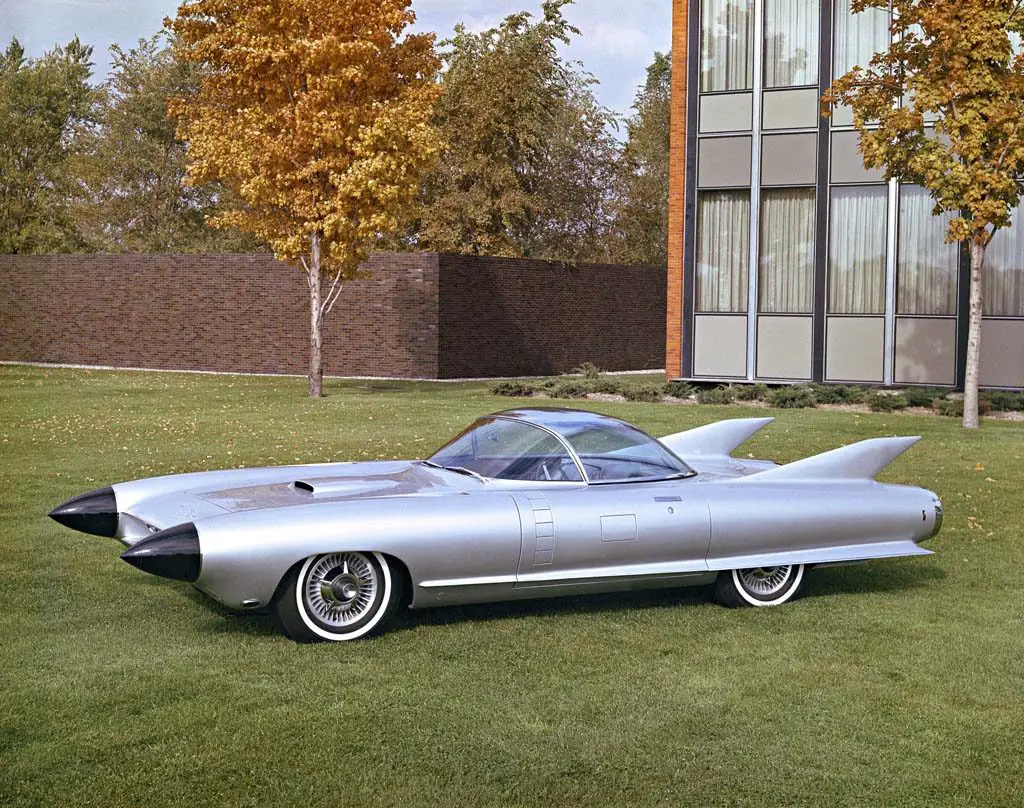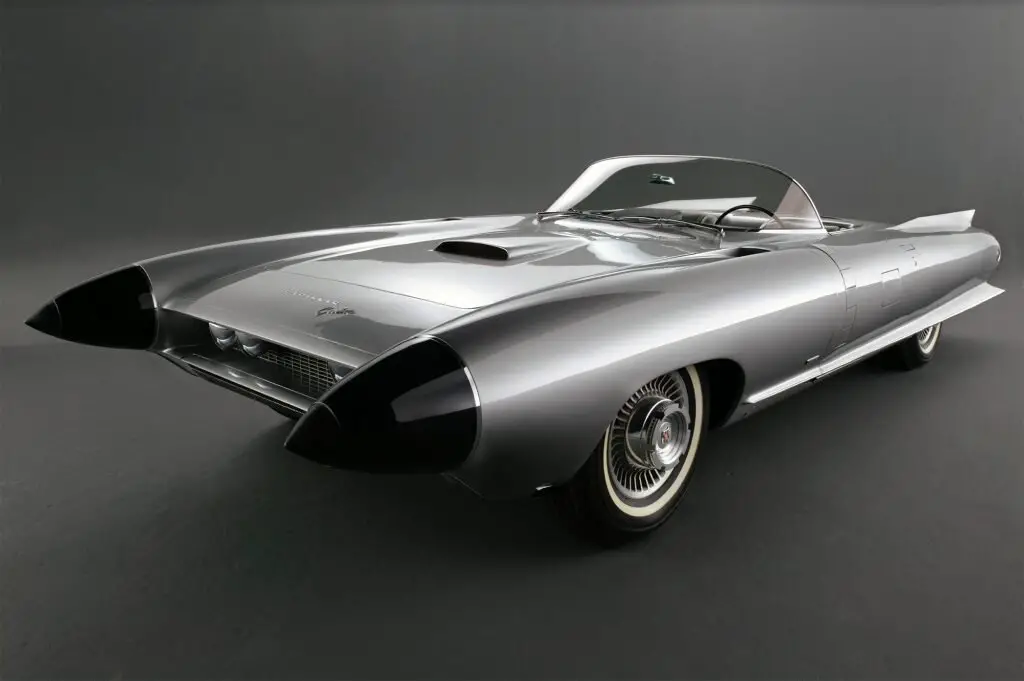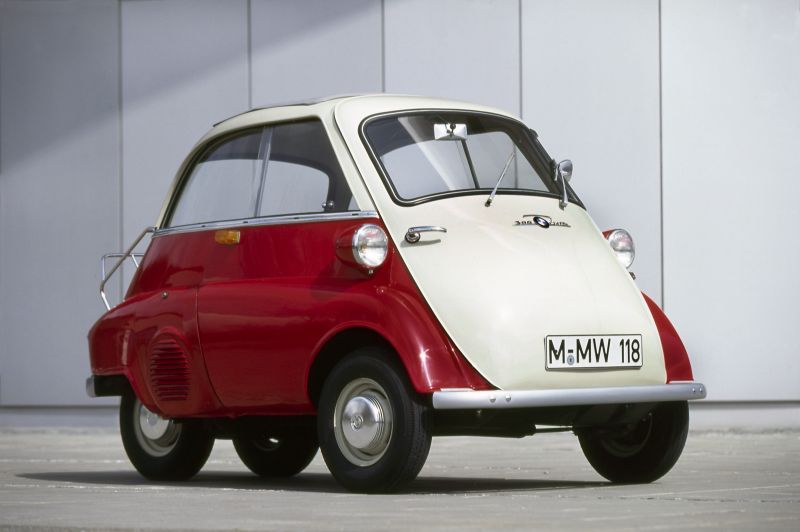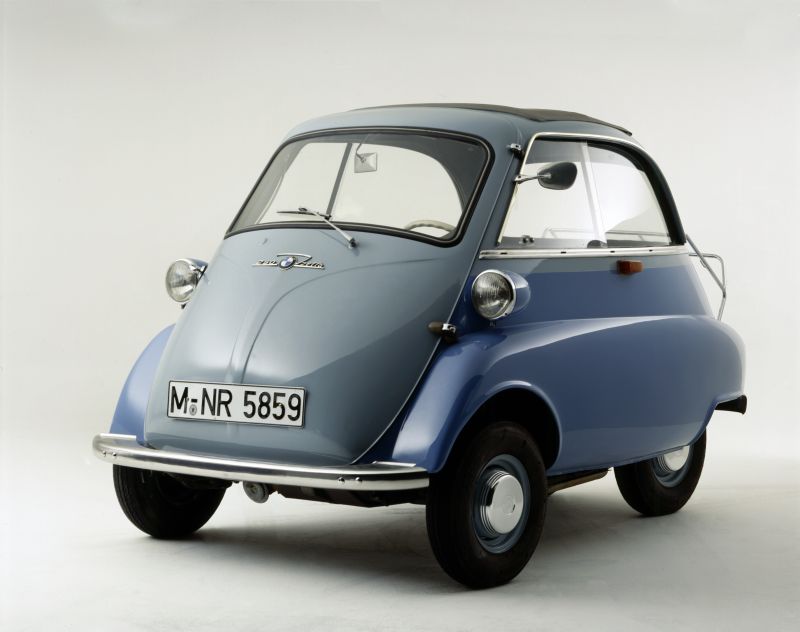Step into the world of automotive innovation with the 1948 Tasco Prototype, an avant-garde concept car brimming with unique and futuristic design elements. This exceptional automobile, designed to defy norms, stands as a testament to visionary innovation in the automotive industry. The Tasco Prototype encapsulated an era of bold experimentation, featuring remarkable design and technological advancements that challenged traditional automotive standards.
The late 1940s were a time of transition and renewal in the automobile industry, marked by post-war innovation and technological advancements. Against this backdrop, the Tasco Prototype emerged, embodying the era’s aspirations for groundbreaking automotive design and setting new precedents for future innovations in the industry.
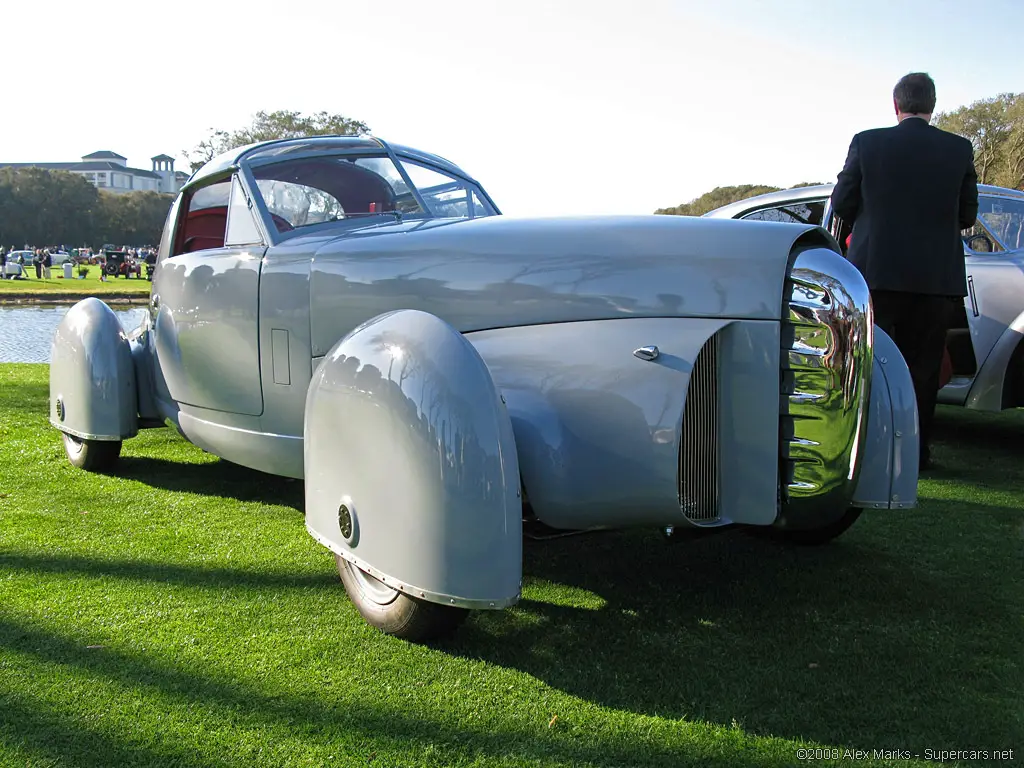
Innovative Design and Features
Distinctive Design
The Tasco’s design was notably distinct:
- Aerodynamic Form: Embracing an aerodynamic shape, the car’s streamlined body reduced drag and presented a futuristic aesthetic.
- Futuristic Appearance: Its sleek lines, long hood, and curvaceous body made the Tasco stand out, exuding a pioneering and unconventional allure.
Unique Features
The Tasco boasted a range of groundbreaking features:
- T-Top Roof: Its removable T-top roof panels were a revolutionary feature, offering a convertible-like experience with a distinct design element.
- Rear-Wheel Steering: Uncommon for the time, the rear-wheel steering enhanced maneuverability and set it apart from conventional vehicles, showcasing its innovation.
Technological Advancements
Cutting-edge Technology
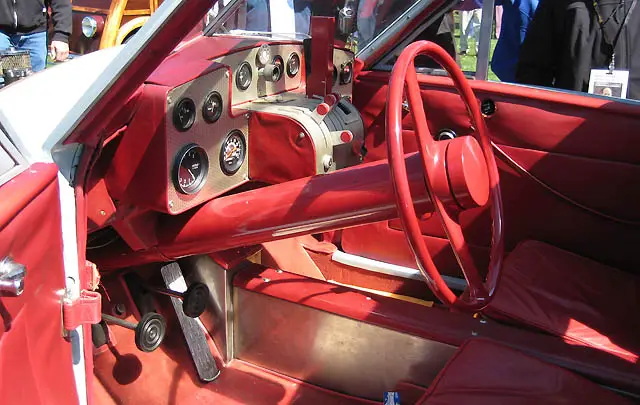
The Tasco Prototype incorporated innovative technology:
- Lightweight Construction: Utilizing lightweight materials for its construction, the car aimed to optimize performance and fuel efficiency, pioneering a focus on weight reduction for speed and handling.
- Aerodynamic Features: Emphasizing aerodynamics in its design, the car minimized air resistance, showcasing forward-thinking engineering for improved performance.
Forward-thinking Elements
The vehicle embraced futuristic technologies:
- Advanced Engineering Concepts: Introducing pioneering design concepts such as a low center of gravity for stability, the Tasco pushed the envelope in automotive engineering for its time.
- Innovative Solutions: It employed concepts like a central headlight that swiveled with the front wheels, signifying a forward-thinking approach in design and functionality.
The 1948 Tasco Prototype’s innovative design, unique features, and groundbreaking technologies positioned it as a visionary and pioneering concept car. Its futuristic appearance, advanced engineering, and pioneering elements left an indelible mark, offering a glimpse into an era of revolutionary automotive innovation and design excellence.
Performance and Driving Experience
Engine Specifications
The Tasco Prototype featured an innovative engine:
- Horsepower: Its specifications boasted around 135 horsepower, offering competitive performance compared to contemporary vehicles of its time.
Driving Dynamics
The driving experience was a blend of innovation and comfort:
- Handling and Performance: The Tasco delivered a smooth and responsive ride, attributed to its lightweight construction and advanced design, showcasing an exceptional balance between power and maneuverability.
- Unique Driving Features: Innovations like rear-wheel steering enhanced the car’s handling, setting it apart by offering superior maneuvering capabilities.
Public Perception and Historical Significance
Reception
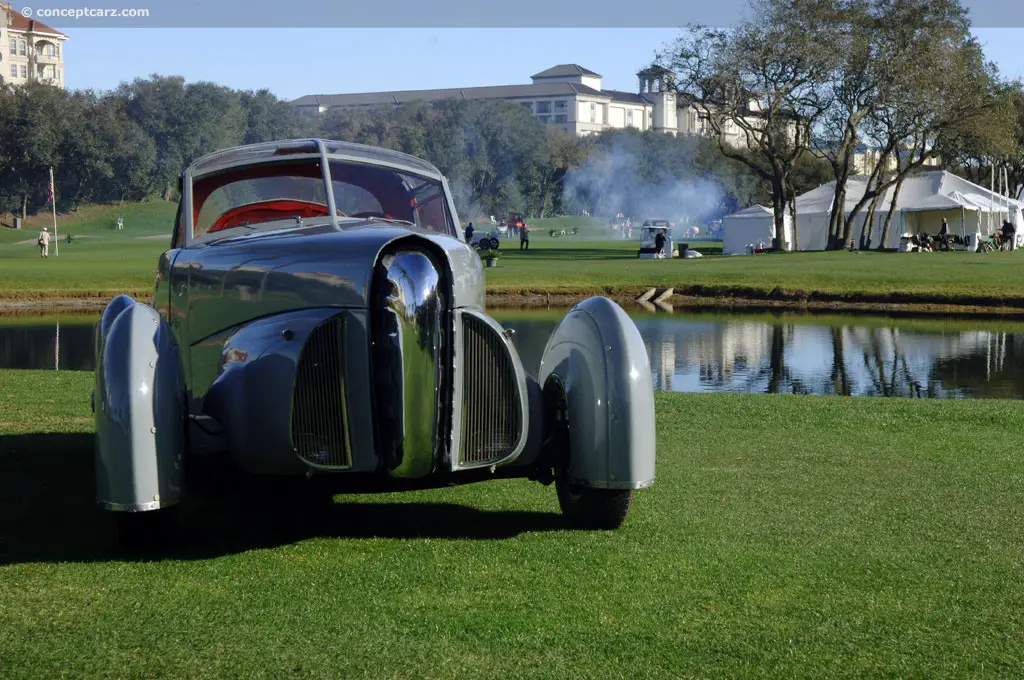
Historical reviews and public reception lauded the Tasco Prototype:
- Praised Design: It was hailed for its futuristic and distinctive design elements, receiving acclaim for its forward-thinking concepts.
- Automotive Expert Approval: Automotive experts and enthusiasts alike praised its innovative engineering and futuristic features, recognizing its pioneering approach.
Significance
The Tasco Prototype left an indelible mark on automotive history:
- Innovative Trailblazer: It signified a revolution in automotive design, challenging conventional standards and paving the way for futuristic vehicle concepts.
- Influence on Future Designs: Its unique features and innovative technology influenced subsequent vehicle designs, inspiring future automotive innovations.
Current Status and Collectibility
Rarity
The Tasco Prototype is exceptionally rare:
- Limited Production: With only a few prototypes manufactured, its rarity is notable, leading to its scarcity in the present day.
- Existence Today: While a few units remain, their exact whereabouts are limited and often held in private collections or museums.
Collectors’ Interest
The car’s rarity amplifies its desirability:
- Collectors’ Appeal: The Tasco’s significance in automotive history and limited numbers drive high interest among collectors, making it a highly sought-after piece in automotive collections.
- Auction Significance: Notable sales or auctions involving the Tasco Prototype have sparked considerable attention and competitive bidding due to its historical importance.
Legacy and Impact
Influence on Automotive Design
The Tasco Prototype’s influence on future designs is evident:
- Design Legacy: Its unconventional design and pioneering technology influenced subsequent vehicle designs, inspiring future innovations in the automotive industry.
Lasting Impact
The Tasco Prototype’s impact remains influential:
- Enthusiast Inspiration: It continues to captivate automotive enthusiasts, serving as a beacon of innovative design, inspiring future designers and innovations in the automotive realm.
The 1948 Tasco Prototype’s innovative design, forward-thinking technology, and rarity have etched its place as a prized relic in automotive history. Its impact on automotive design, collectibility among enthusiasts, and its influence on future vehicle innovations reinforce its revered status as a groundbreaking and collectible piece in the world of automobiles.
Conclusion
The 1948 Tasco Prototype, an icon of innovation and pioneering design, continues to leave a profound imprint on automotive history. Its groundbreaking features, innovative technologies, and limited production status have elevated its significance among enthusiasts and collectors.
Celebrated for its futuristic design and revolutionary engineering, the Tasco Prototype remains a symbol of forward-thinking automotive concepts, inspiring future vehicle innovations and capturing the enduring fascination of automotive aficionados worldwide.

